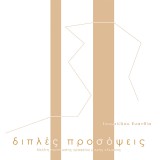The use of double-skin facades as a starting point for the development of a design is a strategy, which in combination with a universally passive architectural design leads to a small energy footprint. A double envelope building is designed based on principles of sustainable architecture taking into account the complexity and adaptability to different climatic conditions.
The review of such strategies and technologies was therefore a driving force for the elaboration of the present research case study.
An important element for the review is the classification of double facades based on the geometry of the facade and ventilation systems, the combination of facade categories and finally the dynamic facades. After choosing the type of double facade that will be used in each case, it becomes imperative to determine the design parameters and technical characteristics, such as the choice of materials and shading systems that will be used. It is stated that with the appropriate selection of the above, the construction and the initial design are differentiated. The advantages and disadvantages of this strategic facade design solution are also mentioned.
In combination with the theoretical approach on the subject, a case study for a small office space is examined.
To sum up, in the final chapter there are the corresponding conclusions, which are represented from the perspective of the author.
